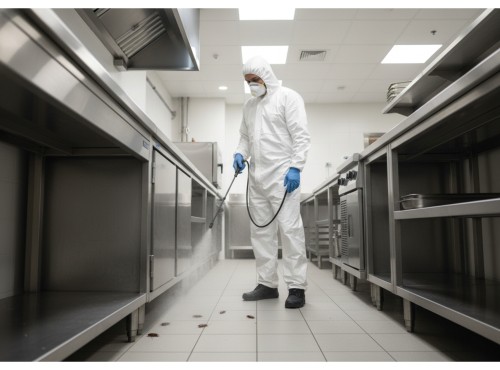Yet, true prevention goes beyond direct extermination. It demands a comprehensive Integrated Pest Management (IPM) framework that includes routine inspections, exclusion measures, and sanitation reviews alongside public education and building maintenance. Property managers, residents, and business owners across neighbourhoods like Kensington Market, The Distillery District, and St. Lawrence Market share a collective responsibility to address the root causes of infestations, such as waste accumulation, moisture buildup, and structural deterioration.
The city’s response to cockroach activity increasingly emphasizes environmental health and public cooperation. Collaborative programs supported by Toronto Public Health and licensed Pest Management Professionals (PMPs) advocate for safe pesticide use, biorational treatments, and sustainable maintenance practices. When implemented consistently, these methods not only reduce infestations but also enhance the overall quality of life in Toronto’s residential and commercial communities.
Step 1: Comprehensive Inspection and Site Assessment
Every licensed Pest Management Professional (PMP) begins the process with a thorough inspection and data-driven site assessment. This initial phase focuses on identifying active infestations, pinpointing harbourage sites, and evaluating sanitation and structural conditions that sustain pest pressure.
Technicians perform crack and gap surveys using specialized illumination tools to detect faecal spotting, cast skins, and oothecae hidden within crevices. Monitoring devices, including glue boards and pheromone traps, are deployed to assess population density and determine movement routes between food, water, and shelter zones.
Moisture readings are often recorded beneath sinks, behind dishwashers, and within basement bulkheads, the usual locations that sustain humidity ideal for egg development. Utility penetrations and plumbing chases are inspected using mirror probes to locate warm voids that commonly host roach clusters.
These pests demonstrate pronounced thigmotactic behaviour, preferring to rest in tight spaces where their bodies make surface contact on multiple sides. PMPs perform ventral inspections under sinks, cabinets, and along foundation walls to identify egg cases before initiating control measures. This behavioural understanding ensures that treatments target concealed populations rather than visible individuals alone.
Step 2: Targeted Treatment Implementation
Once the inspection establishes infestation dynamics, treatment moves to the Integrated Pest Management (IPM) phase, combining chemical, mechanical, and cultural interventions. Licensed applicators select formulations according to infestation severity, environmental sensitivity, and Health Canada registration guidelines.
Crack and crevice treatments are standard in Toronto’s food establishments and apartment complexes. These involve precision applications using microencapsulated (ME) or emulsifiable concentrate (EC) insecticides, which create controlled-release residual barriers on treated surfaces. Such products maintain efficacy for several weeks without excessive odour or staining, a crucial factor for public-facing commercial kitchens.
In high-pressure infestations, gel baits containing Insect Growth Regulators (IGRs) are introduced. These compounds interfere with molting and reproductive development, effectively collapsing population growth within a few reproductive cycles. In structural voids where aerosol access is limited, dusting agents and chitin synthesis inhibitors are deployed, providing prolonged control within wall cavities and electrical conduits.
When treatments are required in sensitive environments, such as healthcare facilities, childcare centres, or restaurants, professionals rely on biorational pesticides. These materials, registered under the Health Canada Pest Control Products (PCP) framework, deliver targeted results with reduced toxicity. All applications follow WHMIS guidelines and Restricted Entry Interval (REI) standards to protect occupants and technicians.
Step 3: Environmental and Structural Modifications
Successful cockroach suppression depends not only on chemical control but also on environmental correction. PMPs routinely conduct sanitation reviews and identify conducive conditions such as standing water, food debris, or clutter that enable ongoing infestations.
Property owners and facility managers in Toronto’s busy neighbourhoods, particularly near Bathurst Street and Queen Street or Parliament and Dundas, often face recurring issues stemming from waste buildup and moisture infiltration. Recommended corrective actions include drain maintenance, food waste management, and exclusion work such as sealing gaps around pipe chases and baseboards with silicone or expanding foam.
In multi-unit dwellings or older commercial properties near St. Lawrence Market and the Queen Street West corridor, structural deterioration contributes to re-infestation. Here, ongoing preventative service programs with quarterly or bi-monthly visits provide essential long-term stability. Routine threshold monitoring enables technicians to detect resurgence early, before populations regain reproductive capacity.
Step 4: Monitoring and Follow-Up
The cockroach life cycle allows rapid rebound following incomplete control. Post-treatment monitoring ensures sustained population decline and verifies treatment performance. PMPs analyze trend data collected from monitoring stations to measure capture rates and adjust bait placement or residual coverage.
Follow-up inspections are typically scheduled every two to four weeks, aligning with the maturation period of German cockroach nymphs. Adjustments to bait matrices, rotation of active ingredients (in accordance with rotational chemistry principles), and periodic vacuum removal of debris maintain long-term control.
In commercial kitchens near Toronto Eaton Centre or eateries across the Distillery District, where daily food production and humidity persist, consistent audit readiness is essential. Technicians document all interventions within service logbooks, including chemical usage, monitoring outcomes, and structural recommendations. This documentation meets both Health Canada PCP and Ministry of Natural Resources and Forestry (MNRF) oversight requirements for pesticide use and environmental protection.
Step 5: Ensuring Compliance and Safety
Professional cockroach management across the Greater Toronto Area operates under the “label is the law” principle. Each product is applied strictly according to manufacturer instructions and federal safety standards. Every licensed applicator maintains MSDS/SDS documentation on-site and adheres to WHMIS hazard classification rules.
For properties handling food, such as those near Yonge-Dundas Square or Queen Street West, compliance extends to third-party audit systems and internal health inspection criteria. Proper storage, signage, and occupant communication protocols confirm adherence to public health regulations.
When applied responsibly, these measures protect not only building integrity but also community health. Effective cockroach control programs represent an intersection of entomological understanding, regulatory compliance, and consistent professional oversight.









